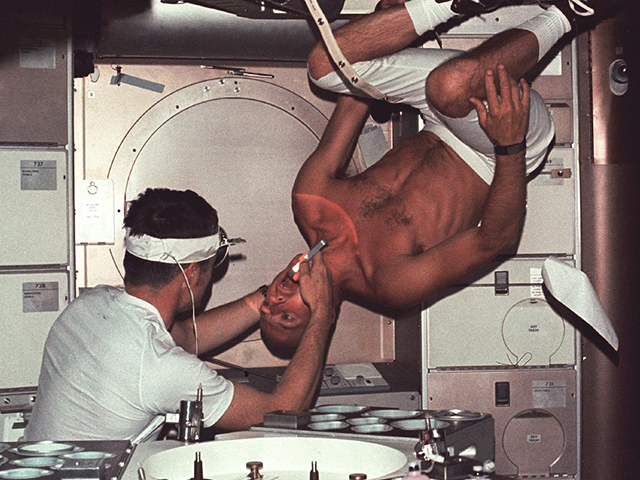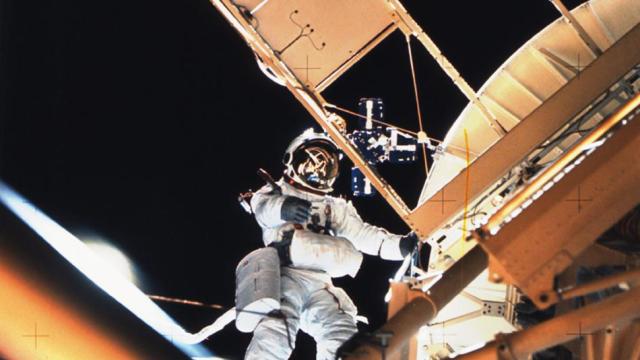Before there was the International Space Station, there was Skylab, America’s first permanent research base in space. It launched 40 years ago today, on May 14, 1973, soaring into the sky on the last of the Apollo-era Saturn V rockets.
Skylab orbited the Earth until 1979, and welcomed three manned missions of three crew members each. But it almost didn’t make it to the first mission at all. In fact, vibrations during its initial liftoff ripped off a meteoroid shield and two of its solar panels, causing temperatures in the workshop to jump to an unfriendly 52 degrees Celcius. Fortunately, NASA engineers were able to move some secondary panels into place, and spent 10 days with the first crew training them on how to make the vessel livable.

The first manned mission arrived to Skylab on May 25. By June the astronauts had the workshop up and running, and it was their innovations were actually what made the following two trips possible. On the astronauts’ first space walk, they deployed a parasol-like sun shield, without which, poisonous gasses would have made the spacecraft totally uninhabitable, and the entire mission a failure. This first crew stayed in space for 25 days, the second arrived in July and stayed for 59, and the final came in November and posted up in Skylab for 84 days.

So why were Skylab missions so important? The research conducted was NASA’s bridge from point A — short term Apollo trips — to point B — long term space flights. Astronauts clocked 2,000 hours of scientific and medical research, logged 10 spacewalks, took 127,000 frames of film of the sun, 46,000 frames of the Earth, and all and all, were guinea pigs in testing just how humans reacted to extended periods in microgravity.
It was also the first time high school students were able to participate in space exploration by submitting their own research proposals to be conducted aboard Skylab. There were 19 student-led experiments conducted, spanning subjects from motor-sensory performance, to immunology, to x-ray flares on Jupiter. One student, Judith Miles, wondered how spiders could form webs while suspended in zero gravity. The spiders, Arabella and Anita, were disoriented at first, but were later successful in building webs that were returned to Miles to study for herself. Another student, Terry Quist, proposed a neutron experiment that so important it led to later research on the Apollo-Soyuz Test Project in 1975, and another experiment on a joint American-Soviet flight.

Once the manned missions were complete, Skylab was moved to a stable altitude where it was expected to stay without flying off on its own for eight to 10 years. NASA wanted to reboot Skylab later on, but that never happened — greater than anticipated solar activity brought it out of that stable state, and NASA decided it was just too old. So on July 11, 1979, NASA guided Skylab back into the atmosphere. Most of it burned up upon reentry, but the rest of the debris was scattered across the Indian Ocean and parts of Western Australia.

So today we’re in awe of badass astronauts like Chris Hadfield. But had Skylab never launched successfully 40 years ago, we’d never be watching his amazing YouTube videos of what it’s like to live in space. [Wired, NASA]
Image credits: NASA
